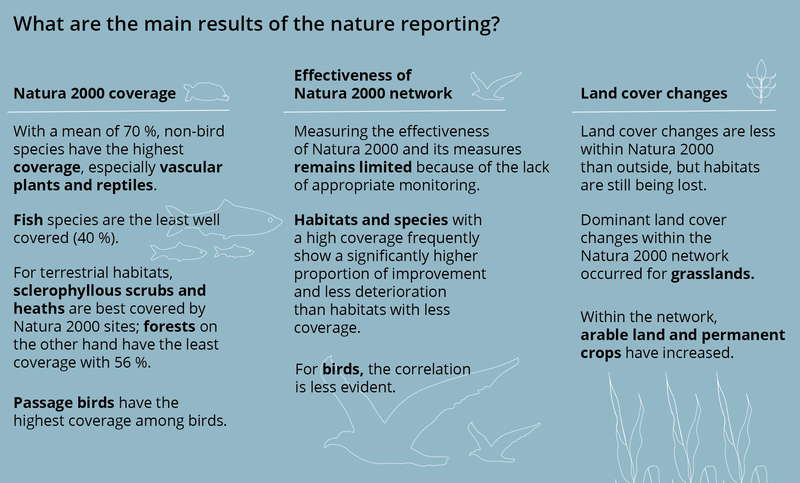All official European Union website addresses are in the europa.eu domain.
See all EU institutions and bodiesNatura 2000 is an important ecological network, which contributes to protect, maintain and restore Europe’s biodiversity.
Almost one fifth of the European Union’s (EU) land area and around 10% of its marine area are covered by the EU Natura 2000 network (around 28,000 sites), making it the world’s largest network of protected areas. Around 60% of the network’s terrestrial area is forests, grasslands and heathlands. See the EEA’s Natura 2000 barometer for further official statistics.
Nationally protected areas in Europe have significantly increased thanks to the Natura 2000 network, but stronger management and conservation measures are needed to effectively boost the potential of the network.
According to our latest assessment, the Natura 2000 network shows positive effects for many species and habitats. For example, bogs, mires and fens, which are better covered by Natura 2000, have a better conservation status than habitats that are less or marginally covered. Land use changes are more marked outside the network. The dominant change across land cover classes within the Natura 2000 network was the conversion of pastures and mosaic farmland into arable land and permanent crops.

Despite the positive impacts, the full potential of the network has not yet been realised. Extra efforts are needed to strengthen management plans and monitoring to achieve effectively managed, ecologically representative and well-connected systems of protected areas. Addressing the knowledge gaps would ensure a comprehensive evaluation of the role of the Natura 2000 network.
For the complete analysis of bird populations, see the latest EEA report on the ‘State of nature’.
- Explore our data on the state of nature
Background information: What is the purpose of Natura 2000?
The main goal of the Natura 2000 network is to safeguard Europe’s most valuable and threatened species and habitats, listed under the EU Birds and Habitats Directive. The network consists of Special Areas of Conservation (SACs) under the Habitats Directive and Special Protection Areas (SPAs) under the Birds Directive.
Human activity is not excluded within the Natura 2000 network that can still be subject to pressures. Effective management of the sites is therefore a decisive factor in achieving conservation objectives.
